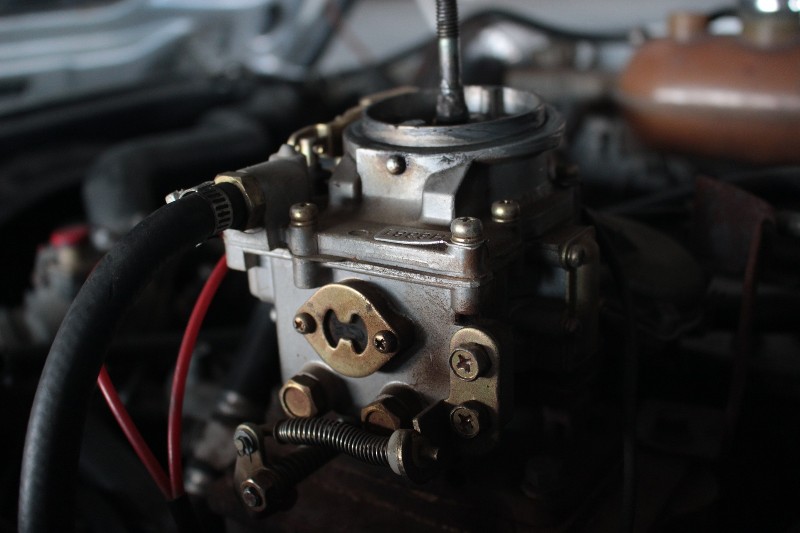A carburetor vaporizes and atomizes the fuel by mixing it with an appropriate air/fuel ratio to match the condition of the spark ignition engine in classic cars. Carburetors come with different barrels. Have you ever wondered how the 6-barrel carburetor works and how it enhances your engine’s performance?
A 6-pack carburetor is a Chrysler or Mopar carburetor setup with three-two barrel carbs on the intake. The sequential setup uses the first two barrels and the other open when the throttle is down. It improves engine performance if it can benefit from the increase in airflow.
The carburetor is an essential component of the fuel system’s spark ignition. A carburetor is situated between the fuel filter and the intake or induction manifold. The carburetor is to supply the engine with the appropriate air/fuel mixture to match the engine’s operations.
What Is A 6-Barrel Carburetor?
A 6-barrel carburetor is a Chrysler setup with the presence of three-two barrel carbs on the intake. Sometimes people call it the 440 Six Pack, with the 440 referring to the Big Block Mopar engine that replaced 440 cubic inches.
What Are The Essential Parts Of The Carburetor?
Liquid fuel enters the carburetor’s float chamber as it enters the air horn. There’s a mixing of air and fuel as they pass through the Venturi in the mixing chamber. The air and fuel mixture then reaches the induction manifold.
Let’s highlight some of the essential parts of the carburetor.
Throttle Valve
In a carburetor, this component controls the appropriate air/fuel mixture entering the engine cylinder. Pressing the accelerating pedal opens the throttle valve. This component is located in the intake manifold to lower the part-load operation’s power output.
Venturi
The carburetor has a Venturi, a tube with decreasing cross-sectional area. The velocity of air increases as air flows through the Venturi. The subsequent reduction in pressure leads to a minimum at the throttle where the fuel discharge jet is located.
Metering System
This component controls fuel flow into the nozzle to allow the appropriate air/fuel ratio. The metering system includes a fuel discharge nozzle and a metering orifice. There’s a production of a low-pressure field as air passes through the Venturi because of the difference in air and fuel.
The orifice and the discharge hole at the exit control fuel quantity.
Float Chamber
This is a fuel storage tank for continuous supply. The float chamber has a floating valve for maintaining the fuel level in the chamber. An increase in the fuel level makes the float move upwards, closing and stopping the fuel supply.
When the fuel level decreases, the float moves down in the chamber, opening the fuel supply to allow more flow into the chamber.

How Does A 6-Barrel Carburetor Work?
One of the most ignored parts of a car, yet very important, is the carburetor. A tiny spill in the carburetor will affect the car’s drivability, leading to a headache for the driver. Let’s discuss how it works.
Air goes through the carburetor’s top, side, or bottom, depending on its design, to the intake manifold. From here, it goes to the combustion chamber of all cylinders. The passage through which air moves in the carburetor is known as the bore, barrel, or throttle.
The barrel has a thin-necked section which is narrower in the middle and broader before and after, known as the Venturi. Air speeds up as it goes through this restriction.
Changes in airflow cause a drop in pressure drawing gasoline through a tiny feed inside the Venturi. This atomizer fuels into a fine mist that mixes with passing air as it goes to the intake manifold.
As air and fuel move through the Venturi, they reach the throttle plate. This is a disc that opens and closest manages air entering the engine. The throttle plate is that part that moves when pressing your foot on the accelerator pedal.
A carburetor does the rest of its work using various tube sizes and changes in pressure resulting from the presence or absence of a vacuum. With everything constant. The ideal air-to-fuel efficiency by weight is 14.7:1.
How Does It Add To My Engine’s Performance?
The 6-barrel carb setup can boost engine performance as long as it can benefit from increased airflow. Your engine can have as many barrels, but it would only be useful if it can utilize the increase, there won’t be any difference in performance.
To utilize the setup, your engine needs other items, including:
- Large cylinder displacement
- Head port work
- Increase exhaust flow
Tri-Duce / Tri-Power
General Motors had a version of the 6-barrel carburetor with similar performance, mainly on Pontiacs and Corvettes. The Tri-Power first appeared in 1957 in full-size Pontiacs. Two years afterward, the option became popular, and performance fans sought it.
The GTO was introduced during the fall of 1963 when the Tri Duce had been around for seven years. It became the most popular Pontiac with this carburation, although it was only available from 1964-1966.
This simple setup has the center carb supplying fuel at all times apart from when under full throttle. The setup has straightforward end carbs and no idle circuits. Earlier GTOs had a vacuum-operated system for opening the front and rear carburetors.
Final Thoughts
Carburetors have different barrel setups. The 6-barrel carburetor has a three-two-barrel setup that uses the first two barrels while the rest opens when the throttle goes down. This setup enhances engine performance as long as it can use the increase in airflow.

